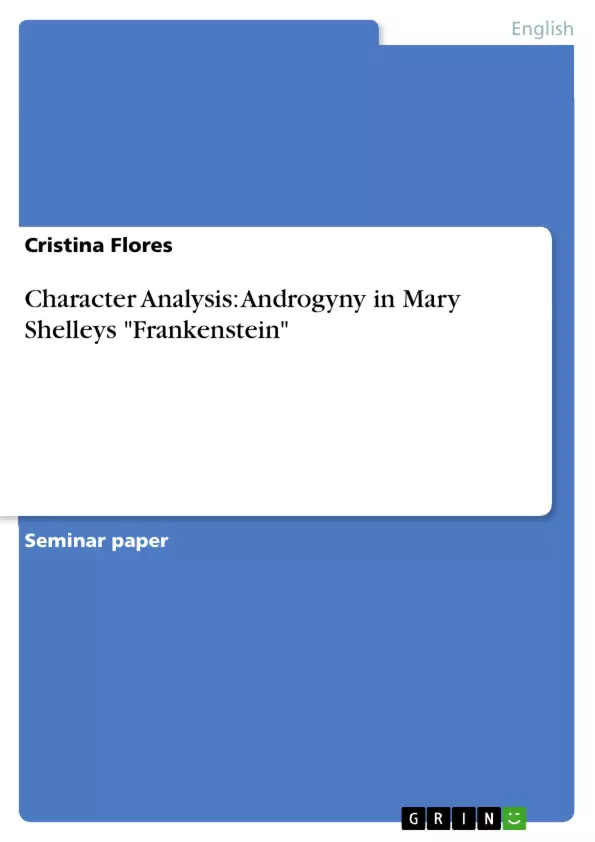Families in the 19th century mostly lived in a patriarchal society. Growing up during this time, Mary Shelley used this society “ruled or controlled by men” as the basis for the population of her novel Frankenstein. On the first sight, the characters appear to fulfill their gender roles perfectly. Women occupy the domestic sphere, men work outside home. In addition, women are only of marginal importance whereas men appear as the strong protagonists who are able to influence the storyline.
Even if this first overview is correct, Mary Shelley does not maintain this severe separation of sexes and their characteristics but proves that both women and men own some features of the other sex. Therefore, one could state that the women in Frankenstein have an important role as well, as, at second sight, they share a lot of similarities with men and vice versa which contributes to analyze the topic of androgyny.
In my term paper I will therefore concentrate on this androgyny of men and women in Frankenstein. Being androgynous, which can be defined as the state of “having both male and female characteristics” , is an essential element of the novel. Analyzing the male characters one discovers that the male characteristics are important but that it is especially the femaleness which leads to the course of the novel and not typically male behavior. With regard to women, the androgyny shows the beginning of emancipation and hence, women as contemporary heroines, able to escape from a male-dominated society.
Furthermore, it is important to analyze the monster that shows androgynous traits so that it cannot be classified as either male or female. These features show that the monster possesses general human qualities as it shares a lot of similarities with the characters of the novel.
Table of Contents
1. Introduction
2. Men’s Androgyny
2.1 Victor Frankenstein
2.2 Henri Clerval
3. Women’s Androgyny
3.1 Elizabeth Lavenza
3.2 Safie
4. The Monster’s Androgyny
5. Conclusion
Bibliography
- Arbeit zitieren
- Cristina Flores (Autor:in), 2010, Character Analysis: Androgyny in Mary Shelleys "Frankenstein", München, GRIN Verlag, https://www.grin.com/document/270532



